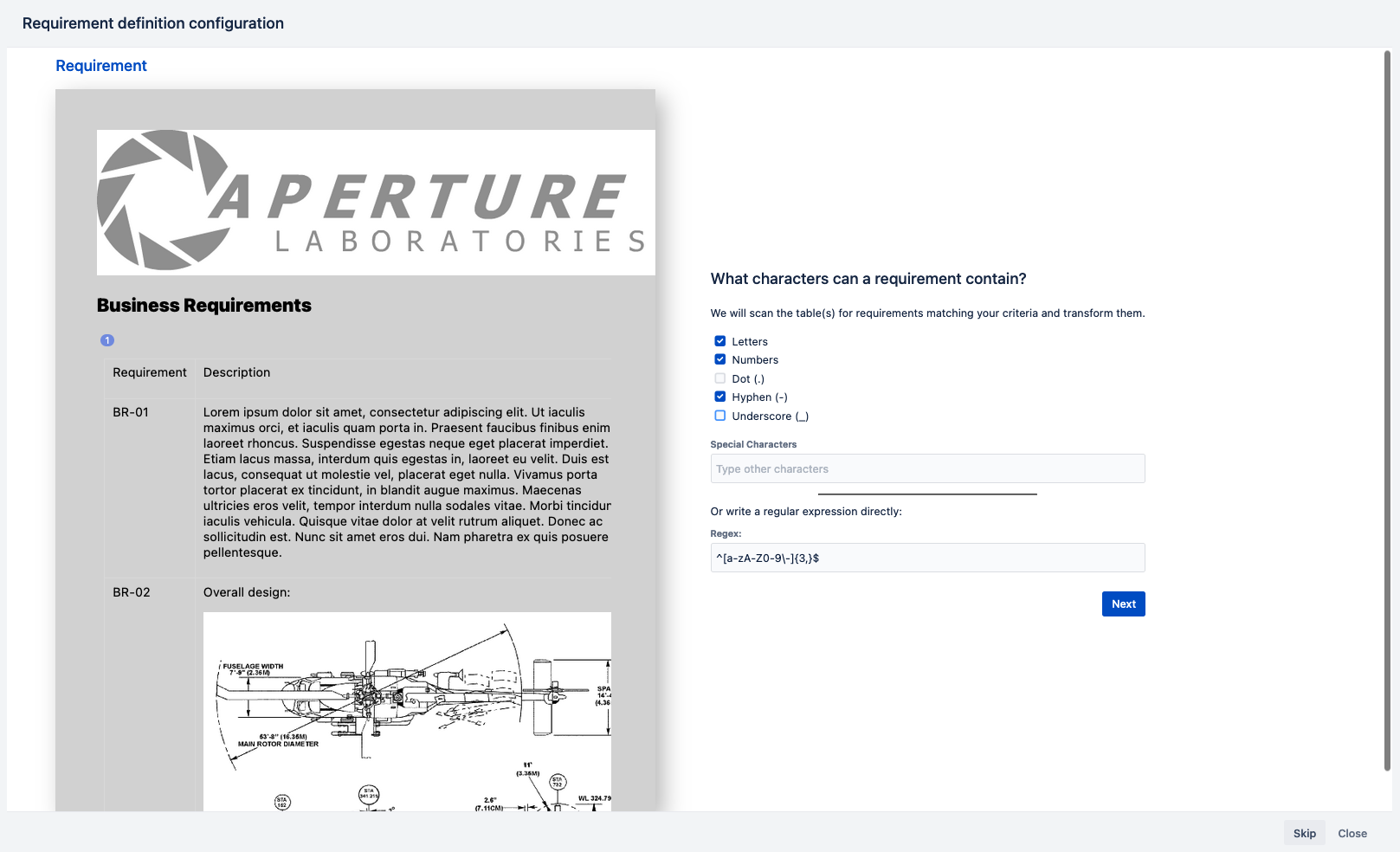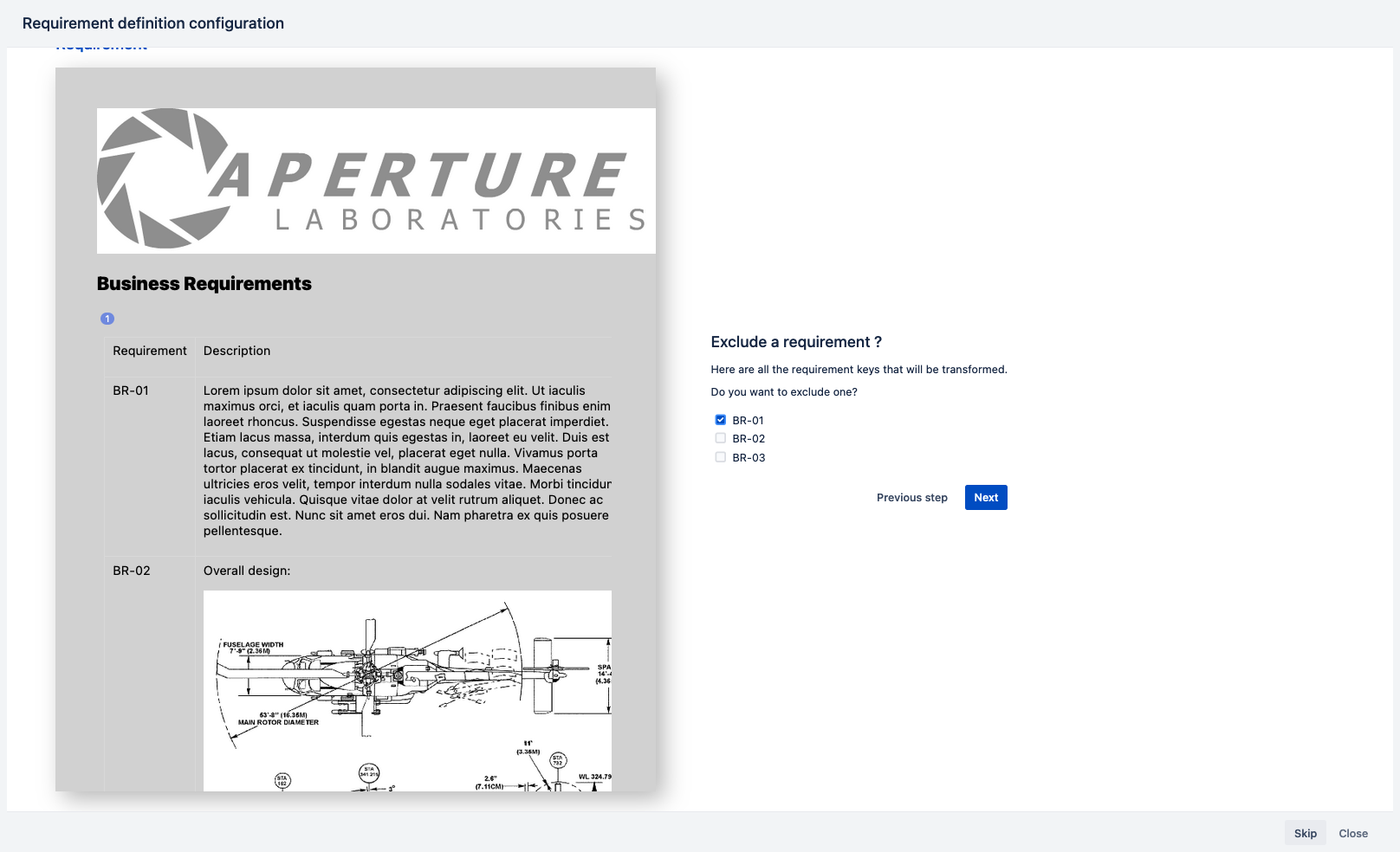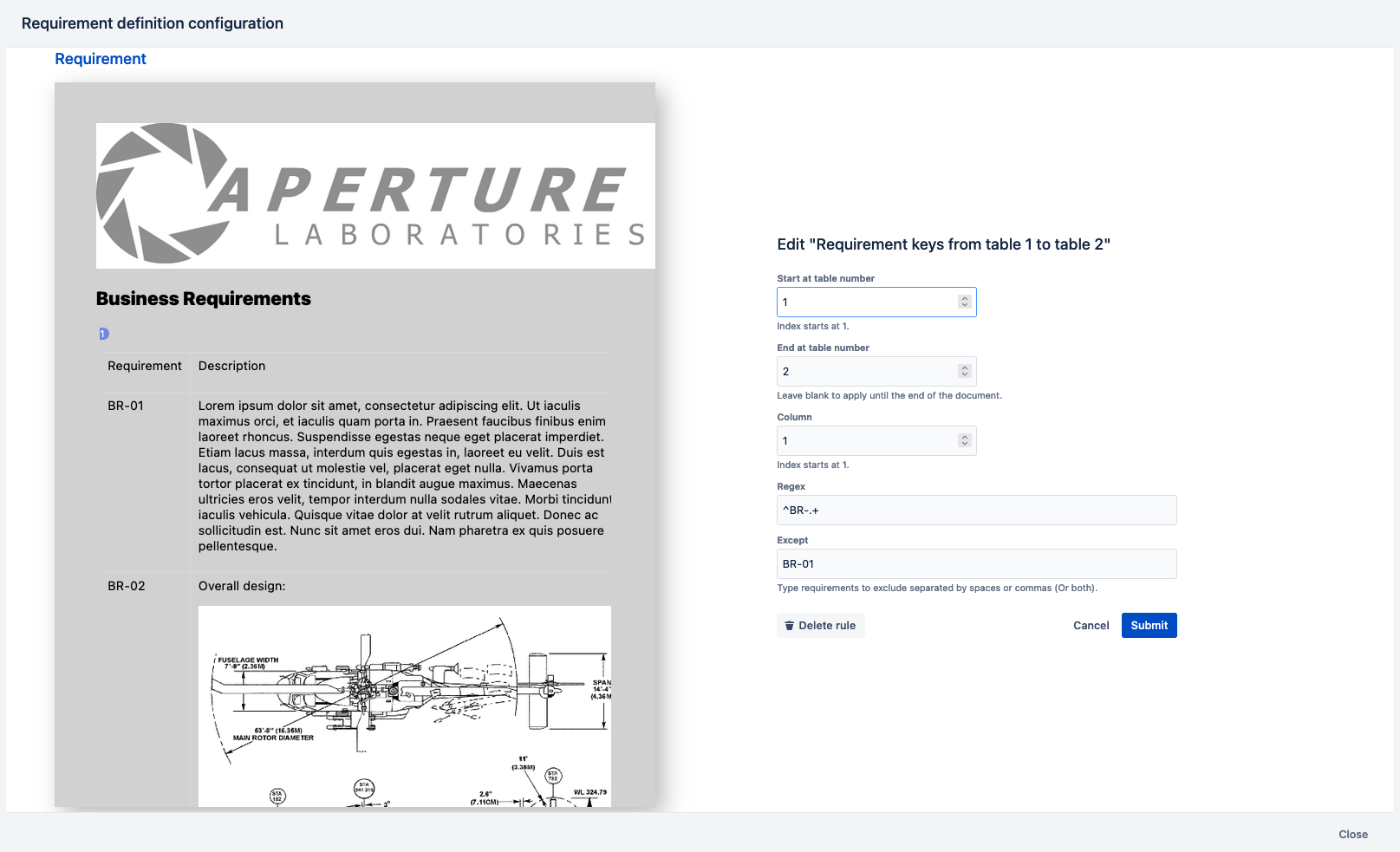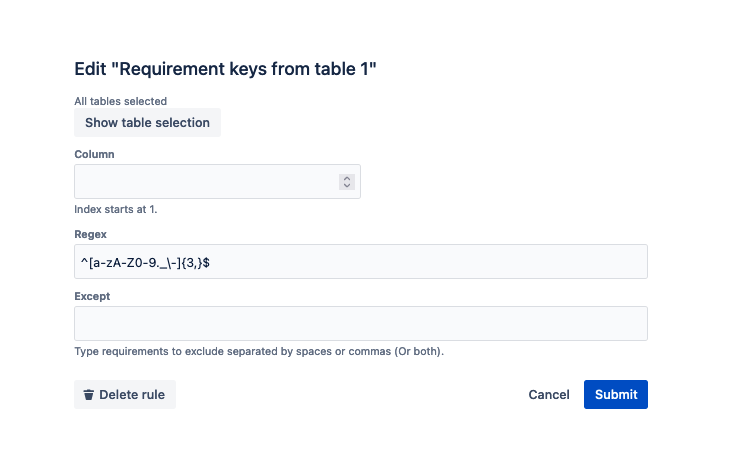When to use it?
When your document already has requirement keys defined as text, and you want to convert them to requirement yogi macros.
Example:
-
When importing a document from Word.
-
When migrating from Requirement Yogi Server
Using the keys transformation
It is the first default step when trying to transform a requirement document. The wizard will take you through every table in your document and ask you which one contain requirements.

After selecting tables containing requirements, you will be taken to an other screen allowing you to refine your text selection.
For instance:
-
Only allowing requirements containing letters, numbers, or hyphens, but no dot or underscore. (Note: Requirements containing only letters would also be detected and transformed)

-
Only allowing requirements starting with "BR-" with a regular expression.
Keeping your requirements selection rules more generic will allow you to reuse the transformation on other pages

On the next screen, you will see a summary of the requirements you selected, allowing you to manually exclude one if necessary.
Note: This step will be skipped if no requirements are found matching your criteria

Changing the plugin configuration
At the summary step before transforming the page, simply click on the rule you want to modify to edit it.
On this step, you can modify every configuration you previously applied, or remove it.

Changing the table selection

On a new rule, all tables are selected by default. If you want to change the table selection, click on the button to show the table selection and type your selection.
-
"1" to select the 1st table
-
"-3" to select all tables up to the 3rd table
-
"3-" to select all tables starting from the 3rd table
-
Leave blank to select all tables
You can add several rules of the same type.
Exemple: Having a key transformation rule targeting tables 1 to 3, and another targeting table 5
